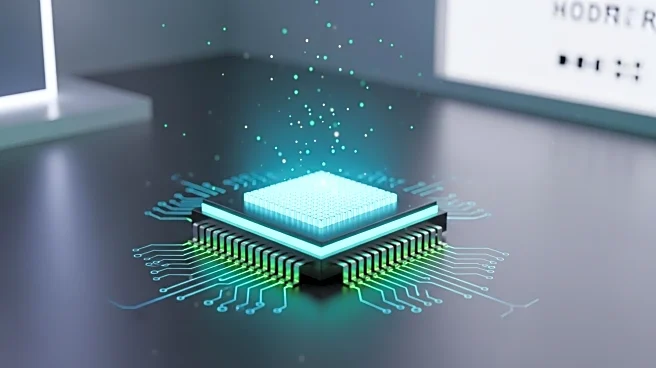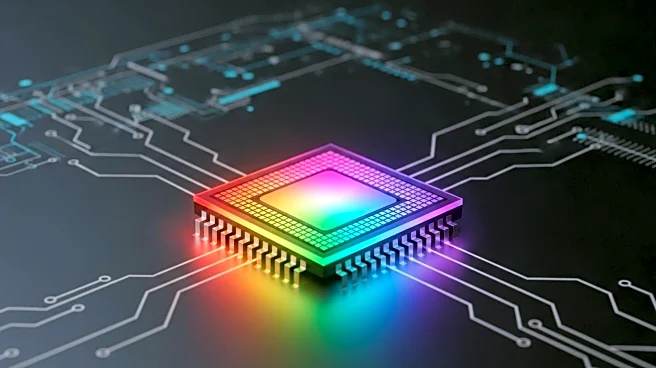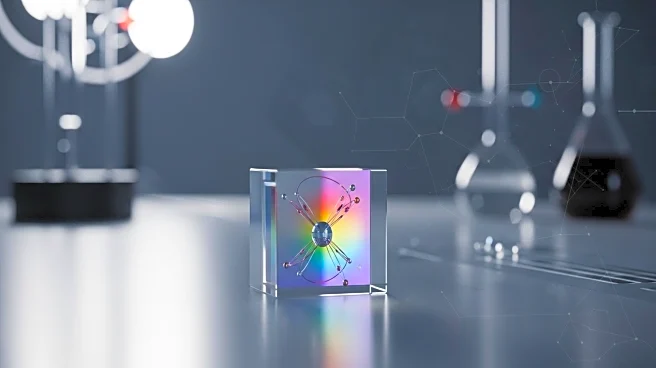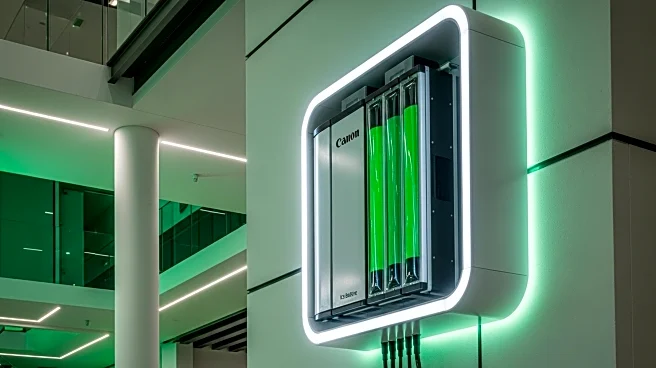What is the story about?
What's Happening?
Researchers at Columbia University have developed a chip that transforms a single laser into a 'frequency comb,' producing multiple powerful light channels simultaneously. This innovation, detailed in a paper published in Nature Photonics, aims to improve data center efficiency by replacing racks of individual lasers with a compact device. The chip utilizes a multimode laser diode and a locking mechanism to purify the laser's output, creating a stable beam that splits into multiple colors. This technology could revolutionize data centers by enabling faster, more energy-efficient systems and has potential applications in portable spectrometers, optical clocks, quantum devices, and LiDAR systems.
Why It's Important?
The development of this chip is significant as it addresses the growing demand for efficient data transmission in data centers, especially with the rise of artificial intelligence. By enabling wavelength-division multiplexing, the chip allows multiple data streams to run in parallel, enhancing the speed and efficiency of data centers. This advancement not only reduces costs and saves space but also opens up possibilities for new technologies in various fields, including quantum computing and advanced sensing systems. The ability to integrate high-power, multi-wavelength combs into compact devices could lead to significant improvements in communication and data processing technologies.
What's Next?
The next steps involve further testing and optimization of the chip for commercial use. Researchers may explore additional applications in quantum communication and cryptography, leveraging the chip's ability to produce stable, high-power light channels. As the technology matures, it could lead to advancements in quantum computing and sensing, potentially transforming industries reliant on precise and efficient data transmission. Stakeholders in the tech industry, including data center operators and manufacturers of optical devices, are likely to monitor developments closely, considering potential investments and collaborations to integrate this technology into existing systems.
Beyond the Headlines
This breakthrough highlights the ongoing evolution of silicon photonics, a field that is becoming increasingly central to modern infrastructure. The ability to produce lab-grade light sources in real-world devices could lead to a paradigm shift in how data centers and communication networks operate. Ethically, the technology raises questions about data privacy and security, as enhanced communication capabilities could impact encryption methods and data protection standards. Culturally, the integration of such advanced technologies into everyday devices may influence consumer expectations and drive demand for more efficient and powerful tech solutions.
AI Generated Content
Do you find this article useful?













